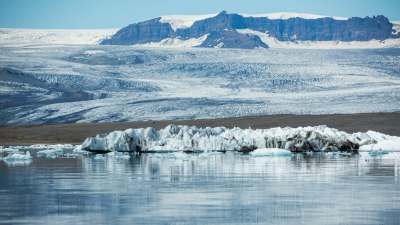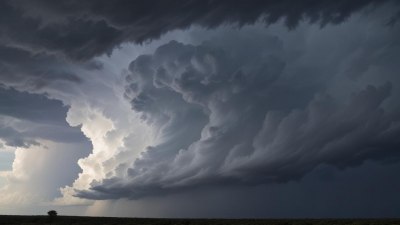The Science Behind Why Antarctica’s 'Summer' Still Feels Like Instant Frostbite
Explore the unique climate of Antarctica and understand why summer temperatures can still be dangerously cold.

Antarctica, often described as the last great wilderness, is a continent that captivates the imagination of scientists and adventurers alike. It is known for its extreme conditions, vast ice sheets, and a climate that can be unforgiving even during the warmer months. Understanding the science behind why Antarctica's 'summer' still feels like instant frostbite requires a deep dive into the continent's unique environment and climatic phenomena.
Antarctica's Unique Climate
Situated at the southernmost part of the Earth, Antarctica is the coldest, windiest, and driest continent. Its climate is characterized by long, harsh winters and short, cool summers. Even during the summer months of November to February, temperatures can plummet. The average high temperature in summer reaches just a few degrees above freezing, but this varies widely depending on location. Coastal areas may experience slightly milder temperatures, while the interior remains relentlessly frigid.
Why Are Summer Temperatures Still So Low?
The average temperature in Antarctica during summer hovers broadly between -2°C to 8°C (28°F to 46°F) depending on specific locations within the continent. Multiple factors contribute to these low summer temperatures. First and foremost, the geographical position of Antarctica plays a crucial role. Located at the pole, the sun's rays strike at a low angle, resulting in less solar energy being absorbed. Furthermore, the continent's high elevation—the Antarctic Plateau averages around 2,500 meters (8,200 feet) above sea level—also contributes to cooler temperatures.
Wind Chill Factor
One significant aspect of the summer experience in Antarctica is the wind chill factor. The continent is known for its strong katabatic winds, which occur as cold air flows down from the high interior to the warmer coastal regions. These winds can reach speeds of over 70 miles per hour, drastically decreasing the perceived temperature. A wind chill of -20°C can make a temperature of just -5°C feel even colder, creating conditions conducive to frostbite and hypothermia, even during summer months.
Frostbite: How It Happens
Frostbite occurs when skin and underlying tissues freeze, leading to the loss of sensation and potential damage to those tissues. It is primarily caused by exposure to cold temperatures, especially in combination with wind. Even mildly cold temperatures can pose a risk when exposed for extended periods, particularly on extremities such as fingers and toes where blood circulation is lower. The combination of low temperatures, wind, and moisture can prompt frostbite to occur rapidly in Antarctica.
Impact of Sunlight
During summer, Antarctica experiences nearly 24 hours of daylight, which can give the impression of warmth. However, sunlight does not significantly warm the air due to reflection from the ice and snow that cover most of the continent. Albedo, which refers to the reflectivity of surfaces, is high in Antarctica because of its ice and snow. Thus, most of the sunlight is reflected back into the atmosphere rather than absorbed, maintaining colder ground and air temperatures even under the relentless summer sun.
The Influence of Geography and Ice Sheets
Antarctica comprises massive ice sheets that act as a natural refrigerator, perpetuating the cold conditions. This ice reflects sunlight, and as the surface melts slightly in summer, the water does not heat up significantly due to the high reflective properties. Furthermore, the expansive ice sheets contribute to the continent's thermal dynamics, capturing cold air and restricting warmer air masses from influencing the temperature. The Antarctic ecosystem, composed mainly of ice, perpetuates the cold environment and directly impacts temperature perception.
Climate Change and Its Effects
While climate change presents challenges on a global scale, its impact on Antarctica is particularly concerning. Warming trends over the past few decades have altered weather patterns and ecosystems, resulting in variations in temperature that can lead to unpredictable conditions. Warmer summers may increase the risk of ice melting, influencing the habitat of native species and accessing different geological features. Nevertheless, even amidst these changes, summer in Antarctica can still mean frostbite conditions due to the unique characteristics of this icy expanse.
Psychological Effects of Cold
Human perception of temperature is often affected by psychological factors. Visitors to Antarctica may expect warmer temperatures during summer based on preconceptions or media portrayals. This misconception can lead to discomfort and errors in judgment when it comes to appropriate attire and preparations. The freezing temperatures, combined with the magnificent ice landscapes and constant sun exposure, may create a feeling of cognitive dissonance that heightens the perception of cold, resulting in discomfort that is difficult to reconcile.
Protective Measures Against Frostbite
Given the extreme conditions that prevail during the Antarctic summer, appropriate preparation and clothing are essential for preventing frostbite. Insulating gear, including thermal socks, gloves, and layered clothing, is crucial for maintaining body heat. Even during summer, those venturing into the region must be conscious of their exposure time and the effects of wind chill. Regular checks for early signs of frostbite or hypothermia should be a part of outdoor activities. With adequate preparation, it is possible to explore the beauty of Antarctica while minimizing the risks associated with its climate.
Antarctica remains a land of paradoxes; its summer sun casts long shadows on an environment that remains unforgivingly cold. Understanding the scientific principles behind why summer in Antarctica still feels like instant frostbite is crucial for appreciating this unique continent. From the geographical influences to the dynamics of wind chill and climate change, every element plays a role in maintaining Antarctica's status as one of the coldest places on Earth. Visitors and researchers alike must adhere to precautions and knowledge to ensure safety while gaining insight into the complex and delicate balance of this remarkable environment.











